We are in the midst of Mental Health Awareness Month this May, and at EMI, we asked a group of individuals a few questions regarding mental health. Today we are highlighting one-- How confident are we in recognizing the signs of mental health issues in ourselves and others?
With statistics revealing that nearly one in five adults in the US experience mental illness each year this is how the data shows our awareness of mental health issues in ourselves and our loved ones.
Overall
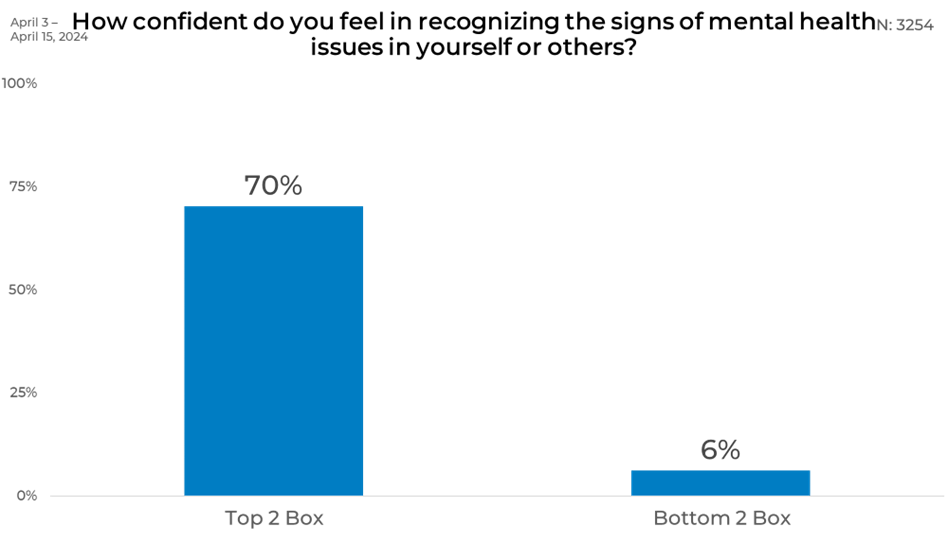
On a five-point scale assessing confidence in recognizing signs of mental health issues, 70% of respondents rate themselves in the top two tiers, indicating a high level of assurance in their ability to identify these signs in themselves or others.
Conversely, only 6% of participants rank their confidence in the bottom two categories, signaling a small minority still significantly uncertain about recognizing mental health concerns. This is big news! This data highlights a strong overall confidence, yet underscores the importance of continued outreach and education for the smaller group who feel less equipped to identify mental health issues.
Gender
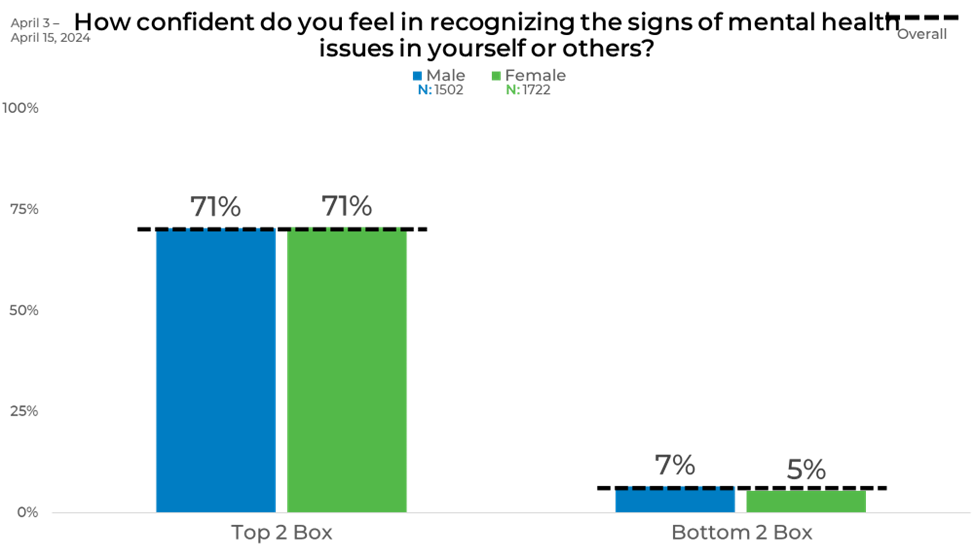
The gender breakdown of confidence in recognizing mental health issues shows remarkably similar levels of confidence between males and females as the overall numbers.
Both groups reported a 71% confidence level in the top two tiers of a five-point scale. This parity suggests that educational messages and resources about mental health are reaching and resonating equally with both genders. At the lower end of the confidence spectrum, there's a very slight disparity: 7% of males report being in the bottom two categories compared to 5% of females. Although these numbers are close, they indicate a slightly higher uncertainty among men about identifying signs of mental health issues compared to women.
Age
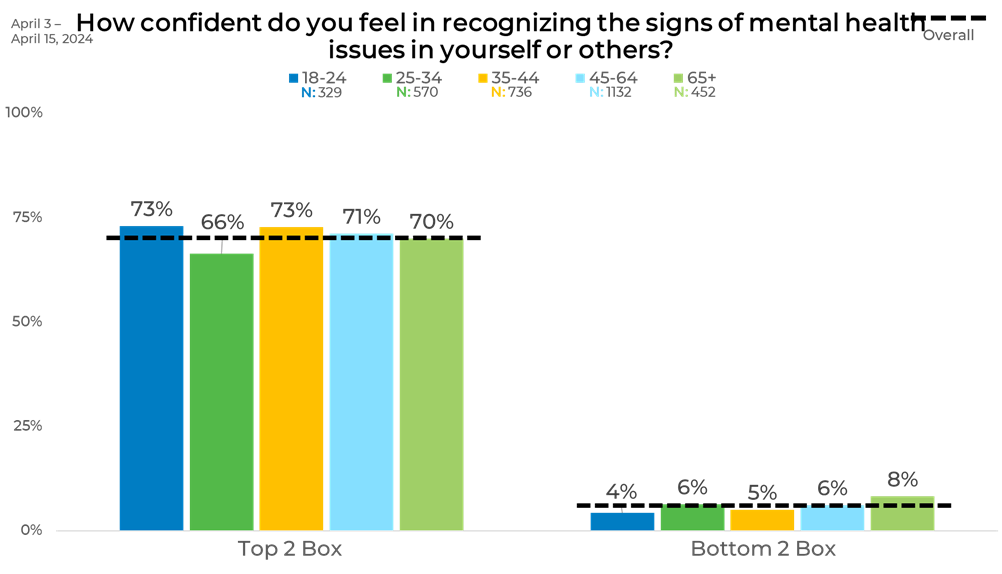
The age breakdown of confidence in recognizing mental health issues reveals steady variations across the different age groups.
Young adults aged 18-24 and those between 35-44 years exhibit the highest confidence, with 73% of respondents in these groups rating themselves in the top two boxes of a five-point scale. The 25-34 age group shows a slightly lower confidence at 66%, while the 45-64 and 65+ age groups maintain a steady confidence level of 71% and 70% respectively.
On the lower end of the confidence spectrum, the oldest demographic, those aged 65 and above, show the highest level of low confidence at 8% and the youngest age group, 18-24, reports the lowest proportion of low confidence at just 4%. The middle age groups (25-34, 35-44, and 45-64) vary slightly between 5% and 6%.
Ethnicity
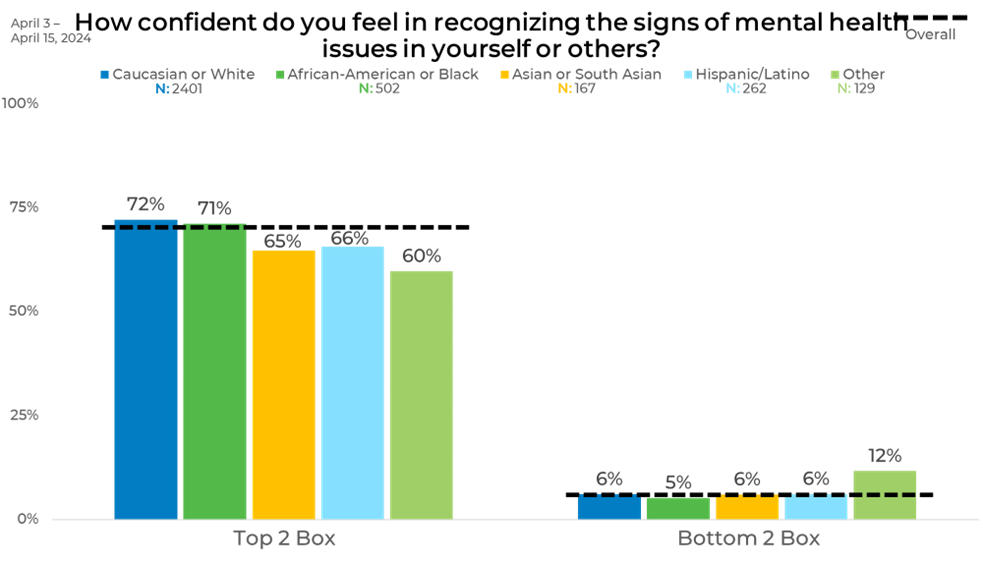
The confidence in recognizing mental health issues varies slightly across different ethnic groups. Caucasian or White respondents report a relatively high confidence at 72%, with African American or Black close behind at 71%. Confidence appears somewhat lower among Asian or South Asian and Hispanic/Latino populations, at 65% and 66% respectively.
Panels
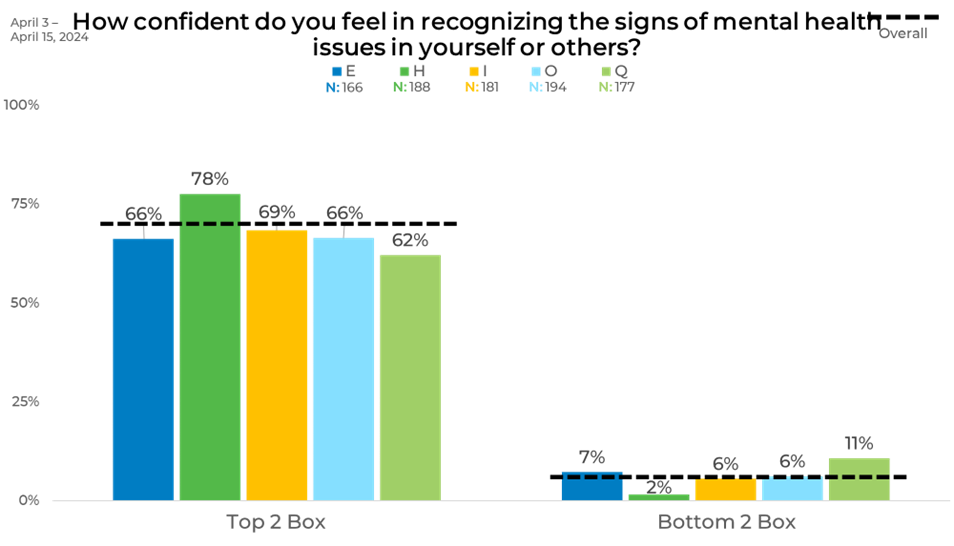
In assessing confidence in recognizing mental health issues across different survey panels, the data reveals substantial variability, pointing to how demographic and contextual factors influence mental health literacy. Panel H leads with an impressive 78% of respondents confident in their ability to identify mental health issues (top two boxes), showcasing possibly the most effective reach or impact of mental health education among the panels. On the other end of the spectrum, Panel Q shows a marked discrepancy, with only 62% in the top two categories and a notably high 11% in the lowest confidence tiers (bottom two boxes). This 16% gap in high confidence between Panel H and Panel Q is the largest observed across the panels, illustrating significant differences in awareness and education levels.
The discrepancies between the different panels above show the importance of ensuring that when gathering data, an emphasis is placed on strategically blending sample sources to balance demographics as well as behaviors and attitudes.
Download The Sample Landscape: 2024 Edition to better understand how panels differ from one another and how they impact your data.






